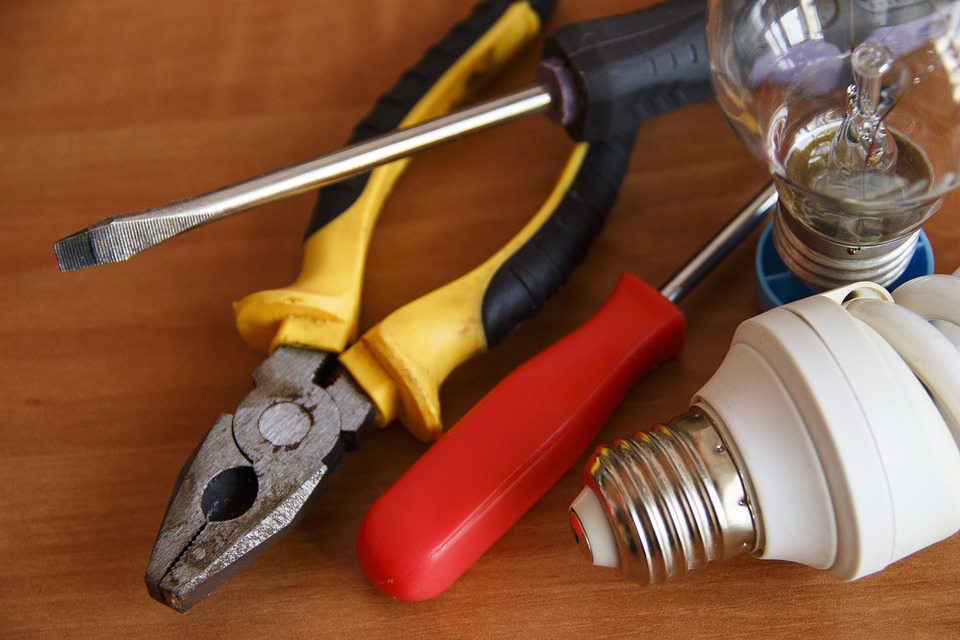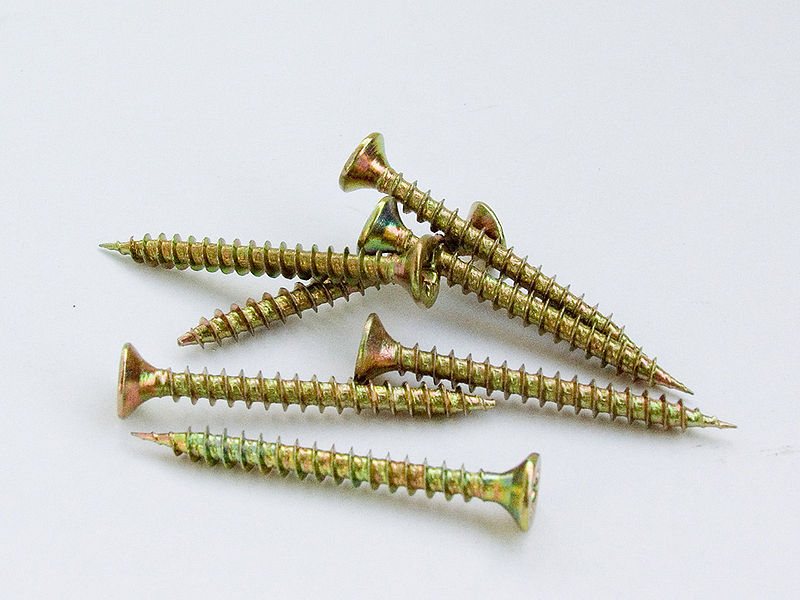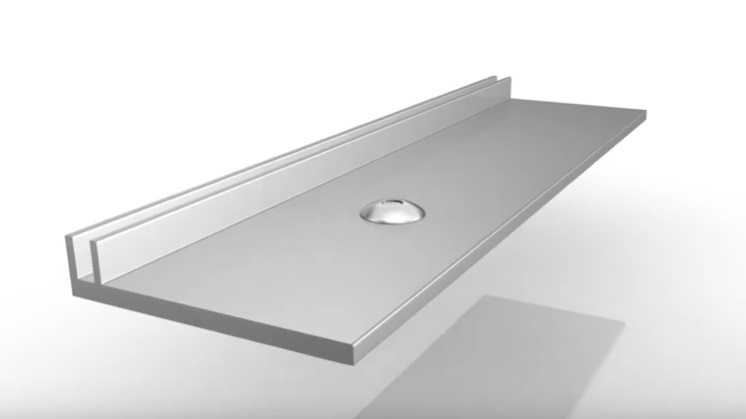In construction or in everyday life, various materials and equipment are often used to connect two structures. In the professional sphere, the main method of adhesion of metal is welding, but a universal tool is suitable for home conditions - a riveter (riveter). This device is actively used for reliable adhesion of various materials, guaranteeing strength and durability, while the price does not hit the wallet hard. In the article, we will consider the main questions that lovers of doing everything with their own hands may have, and the editorial staff of "bestx.htgetrid.com/en/" presents to your attention a rating of the best riveters for 2020.
Content
- 1 What is a riveter and the purpose of its use
- 2 Equipment specifications
- 3 Positive and negative aspects of the device
- 4 The main criteria for choosing a riveter
- 5 Top manufacturers
- 6 Types and characteristics of the device
- 7 Rating of the best riveters for 2020
- 8 Device operation process
- 9 Professional recommendations
What is a riveter and the purpose of its use

The main purpose of the riveter is to connect two materials with a rivet. A special design is installed in the finished holes, which allows you to connect almost anything for a long time. Before making the connection of two parts, a marking is made of the place where the rivet will be installed. After that, a hole is drilled on two materials. A rod, a rivet, is inserted directly into the axially aligned hole, and a rivet is attached to it with special equipment.
This tool is used in many cases, in everyday life, construction, installation. The riveter does not require much knowledge during operation, but without specific instructions and a description of the work, it is unlikely that it will be possible to complete the correct process. Therefore, before deciding to buy such a device, it is necessary to carefully study the principle of its operation and, presumably, determine on what materials it is planned to work. By the way, not only the tool itself depends on the type of material, but also the mandatory presence of special rivets.

Equipment specifications
The riveter's mechanism practically does not differ from its type of use - professional or amateur. Its design includes the following components:
- main body, which includes a handle;
- at the end of the body there is a special head required to install the rod (rivets);
- a lever made in the form of a handle with a linkage mechanism;
- inside the structure there is the mechanism itself with a sleeve, which engages the rivets with materials;
- spring.
In appearance, this tool may resemble pliers with a hint of a construction gun.
The adhesion of the materials is done by squeezing the two handles together.
Positive and negative aspects of the device

The tool is widely used in many areas, but where high adhesion conditions are not required.
The positive features of the riveter include the following:
- easy to use and does not require much physical effort;
- inexpensive in price, and also requires budget consumables;
- when bonding materials with this type of equipment, no special surface cleaning or treatment with degreasing agents and other construction details is required;
- due to its small size, it is easy to use in hard-to-reach places;
- bonds almost all alloys and materials, as well as wood, plastic and other types of structures;
- operation does not require additional, sometimes harmful, adhesives, and the tool can be used in any climatic conditions.
Despite the obvious advantages of the tool, there are also equally important negative aspects:
- unfortunately, this type of clutch does not guarantee durability;
- there is no complete tightness;
- if the material is made of a thin sheet type, then the structure is weakened by drilling holes;
- the appearance of the rivet is not very aesthetic.
the tool has more positive qualities, which makes it possible to use it at home without the involvement of expensive and difficult-to-operate equipment, and the riveter is a safer way of adhesion of materials.
The main criteria for choosing a riveter

In order to choose the best tool, you need to decide on some criteria that you should pay attention to:
- Purpose of use. Two purposes are defined:
- professional use - for such purposes, a device is purchased that has a wide range of different types of rivets, as well as the ability to adjust compression;
- home operation - simple in design devices, budgetary and low effort, which are used to connect 3-4 types of rivets.
- Mechanism of construction and appearance.
- one-handed - small-sized tools that are used in hard-to-reach places, the only drawback of such equipment is that you will have to make every effort to compress, which leads to rapid fatigue from work;
- two-handed - they may vary in the length of the handles, but for more versatile work, because the effort will be minimal, and the grip is more durable.
- Technical capabilities of the working mechanism with or without turning function. These can be stationary mechanisms or mobile ones.
- in mobile mechanisms there is the possibility of turning the head of the body, which allows you to work in tight conditions;
- combined view of the mechanism - the tool has the ability to rearrange positions in two degrees 0 and 90;
- the stationary mechanism assumes that the riveter is always in one position, without the possibility of repositioning the head.
- Additional functions. Depending on the manufacturer and cost, the device may include replaceable attachments that expand the possibilities of using the tool.
- Coupling rod - rivets. There are various types of rivets on the market, but not all may fit a particular tool. Today, there are two types of coupling rods:
- blind rivets - are rods with a smooth head, in the process of adhesion, flaring (deformation) of the end of the rivets occurs, made of aluminum, steel and copper;
- threaded rivets - for a strong and durable adhesion, as the name implies, there is a special thread on the rods, into which self-tapping screws, molly dowels are screwed, but for this type, special nozzles are required.
- Tool material. Budget options, made of fragile material, will not allow the parts to be fastened firmly, since tangible physical strength is required to squeeze the handles. The most common body materials are stainless steel or aluminum alloys.

Top manufacturers
There are many manufacturers on the tool market, which begs the question: which company is better to choose. The most popular, according to buyers, include the following brands:
- Stanley;
- YATO;
- Topex;
- KRAFTOOL.
The popularity of the models of these manufacturers is due to the high quality, durability of the tools and various price criteria.
Types and characteristics of the device
What kind of riveters are there? The table shows the varieties of the instrument.
| Name | Varieties | Characteristic |
|---|---|---|
| Power type | Manual | The appearance resembles ordinary pliers, with rubberized handles. Performance will be determined based on physical effort |
| Rechargeable or electric | The energy of this type of rivet is directed to impact and rivet formation. The appearance is similar to a pistol, as there is a button on the body. made in the form of a trigger, and works from the mains or battery | |
| Pneumatic | More professional tools, as they have more performance and a complex mechanism. | |
| Rivets | Length and diameter | In working conditions, it is worth determining the thickness of the fastened parts, on which the size of the rivet will depend. If you choose the wrong length, the head will not deform correctly and the grip will not be strong, and sometimes not at all. The main thing when choosing a consumable is to choose not only the size of the rivet, but also to be sure that it will fit the tool. |
| Manufacturer | Russian production | ZUBR, BARS |
| Foreign manufacture | Gross, Kraftool, STANLEY |
Rating of the best riveters for 2020
The rating of quality products will help answer the question: which is the best tool to buy for the home and how much the best models cost. The review presents popular tool models based on customer reviews and professional opinion.
Riveter Kraftool 31170-H6

Classic design for blind rivets. Suitable for rods with diameters: 2.4 mm, 3.2 mm, 4 mm, 4.8 mm, made of steel, aluminum and stainless steel. The package includes: a case, a set of coupling rods in the amount of 60 pieces, various nozzles and a 10 mm adjustable key for changing them. The handle body material is made of rubber and plastic. Average price: 1000 rubles.
Advantages:
- large set of nozzles;
- the ability to work with 4 types of rivets;
- convenient storage;
- low price;
- famous brand.
Disadvantages:
- plastic handles.
Riveter STANLEY MR55 0-69-804

Used to work with blind rivets with diameters: 3 mm, 4 mm, 5 mm, 2 mm. The material of the rods should be made of copper, steel, normal and stainless, aluminum. The kit includes a wrench and nozzles. Tool dimensions - 26 cm, weight 0.63 kg. Additional information from the manufacturer: finger restraints; clamp for fixing the handles; spring loaded handle. Average price: 800 rubles.
Advantages:
- popular brand;
- does not require much effort;
- small and lightweight;
- easy to use;
- safe
- low price.
Disadvantages:
- no case for storing tools and accessories.
Riveter Gross 40401

The classic type of tool that produces rivets clutches with a diameter of 2.4 mm, 3.2 mm, 4.8 mm. The material of which the rivets are made: various types of steel and aluminum. The kit includes a wrench and attachments. Tool handles are made of plastic. The device has a length of 28.5 cm and a weight of 0.6 kilograms. Die-cast body with stamped steel arm. Average price: 1200 rubles.
Advantages:
- high performance;
- easy;
- intended for home use.
Disadvantages:
- no case for collecting tools;
- overpriced;
- plastic handles.
Riveter TOPEX 43E707
The tool is suitable for rivets with a diameter of 2.4 to 4.8 mm made of aluminum. Type of rivets: blind rivets. The set includes 4 tips, open-end wrench. Weight: 0.48 kg, dimensions: 40 * 125 * 325 mm. Average price: 500 rubles.
Advantages:
- large lever travel;
- easy to use;
- suitable for home use;
- low price.
Disadvantages:
- no case;
- not very functional.
Cast riveter Yato "CrMo"
The cast riveter “Yato” is made of CrV tool steel and is used for steel and aluminum rivets. Dimensions 200 mm. Fits rivets from 2.4 to 4.8 mm. Average price: 1400 rubles.
Advantages:
- easy to operate;
- lightweight and small-sized;
- does its job;
- comfortable in the hand.
Disadvantages:
- overcharge.
Riveter HASKYY HBNZ-17

Tool design: lever-folding type. Rivet type - threaded. Material of which the rods are made: aluminum, steel. The set includes 150 pieces of attachments, rivets for all types of attachments, a key, a storage case. Instrument dimensions: 34 cm, weight 3.5 kg. Additional information from the manufacturer: the rivet kit includes: rivet attachments M5-M6-M8-M10-M12, 150 threaded rivets, 30 pcs. five sizes; plastic case. Average price: 3700 rubles.
Advantages:
- high-quality assembly;
- easy to use;
- container for tools and attachments;
- reinforced body;
- the price corresponds to the functionality.
Disadvantages:
- heavy.
Device operation process

Every person who decided to make repairs with his own hands asks the question: how to use the tool? The riveter is easy to use and does not require any specific knowledge. The principle of the tool is as follows:
- In the details that need to be fastened together, a through hole is drilled. Moreover, it should be equal to the size of the rivet.
- A pin must be inserted into the hole so that the short part of the rivet is inside.
- The required nozzle is installed on the rivet head and pressed against the rivet. Physical effort is applied to squeeze the handles.
- Several compression of the handles allows the rod to break off, thereby the parts are adhered.

Professional recommendations
When choosing a tool, professionals advise to pay attention to only four components, which guarantee the purchase of the best riveter and will not allow making mistakes when choosing:
- Body material. This criterion is of great importance, since plastic tools will break the first time they are used. It is better to spend a little more money and buy a reliable steel riveter than get a budget option that can break even before you start working.
- Functionality. The more expensive the tool, the more possibilities it has. Of course, if it will be used once a year, then it is not worth buying expensive in price. In any case, keep in mind that different fastening materials may be required, and the tool will only be suitable for one type of rivet.
- Weight and dimensions. A large and heavy tool will not allow maximum compression force and will be difficult to transport.
- Manufacturer's company and customer reviews. This is most likely one of the main selection criteria. Before buying, carefully study consumer reviews, as well as clarify information about the manufacturer, so that if necessary, send the tool to the service center for repair.
The riveter is a tool that is widely used in construction, installation and everyday life. With its help, you can make adhesion of parts from various materials. There are many manufacturers, tool options on the market, and in order to understand how to choose the right tool, the presented overview will help. A tool that you plan to use often may be more expensive in price, but have many useful options and, accordingly, maximum functionality. If you purchased one of the products described in the rating, or use another brand of riveter, then share your opinion on the performance of the device in the comments.












